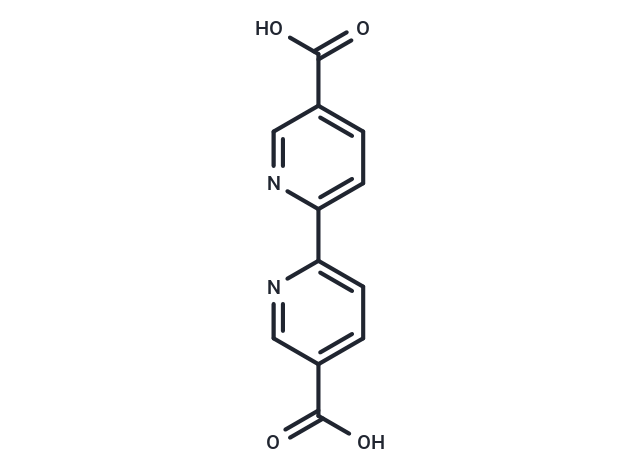Shopping Cart
- Remove All
 Your shopping cart is currently empty
Your shopping cart is currently empty

Prolyl-4-hydroxylase Inhibitor 11, a novel proline 4-hydroxylase inhibitor, shows protective effects against oxidative stress and Cu(II) toxicity in Chlorella vulgaris.

| Pack Size | Price | Availability | Quantity |
|---|---|---|---|
| 50 mg | $30 | In Stock | |
| 100 mg | $42 | In Stock | |
| 500 mg | $98 | In Stock | |
| 1 g | $145 | In Stock |
| Description | Prolyl-4-hydroxylase Inhibitor 11, a novel proline 4-hydroxylase inhibitor, shows protective effects against oxidative stress and Cu(II) toxicity in Chlorella vulgaris. |
| Targets&IC50 | Prolyl hydroxylase:0.19 microM |
| In vitro | In this study, we evaluated the role of 2,2'-bipyridine-5,5'-dicarboxylic acid (Bpy-COOH) in protecting Chlorella vulgaris from the oxidative stress and toxicity induced by Cu(II). In vitro tests indicated that peroxidase-like complexes could be formed between Bpy-COOH and Cu(II). It could be concluded that the use of Bpy-COOH could significantly decrease Cu(II) toxicity to algal cells by forming peroxidase-like complexes.[1] Members of a series of 2,2'-bipyridines have been synthesized and tested as inhibitors of prolyl hydroxylase. [2,2'-bipyridine]-5,5'-dicarboxylic acid (IC50 = 0.19 microM) is the most potent inhibitor of its type yet reported.[2] |
| In vivo | In this study, we evaluated the role of 2,2'-bipyridine-5,5'-dicarboxylic acid (Bpy-COOH) in protecting Chlorella vulgaris from the oxidative stress and toxicity induced by Cu(II). The in vivo experiments showed that the production of reactive oxygen species in C. pyrenoidosa treated by the addition of Bpy-COOH and Cu(II) in three orders were all significantly less than that in cases treated with only Cu(II).[1] |
| Molecular Weight | 244.2 |
| Formula | C12H8N2O4 |
| Cas No. | 1802-30-8 |
| Smiles | OC(=O)c1ccc(nc1)-c1ccc(cn1)C(O)=O |
| Storage | Powder: -20°C for 3 years | In solvent: -80°C for 1 year | Shipping with blue ice. | ||||||||||
| Solubility Information | DMSO: 0.97 mg/mL (3.97 mM), Sonication is recommended. | ||||||||||
Solution Preparation Table | |||||||||||
DMSO
| |||||||||||

Copyright © 2015-2025 TargetMol Chemicals Inc. All Rights Reserved.